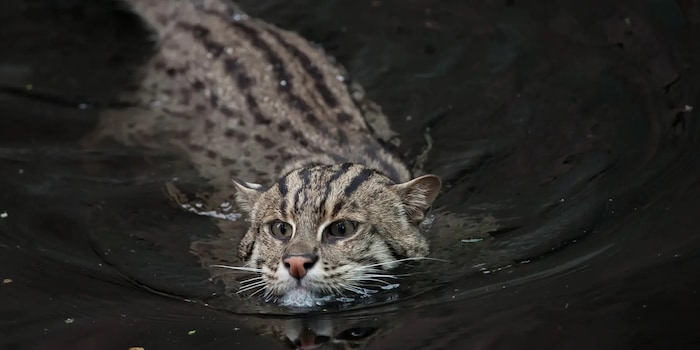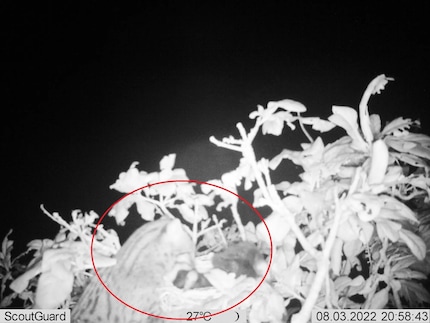
Fishing cat on the wrong track
Cats are usually good climbers, but tend to be afraid of water - or so the cliché goes. Until now, the exact opposite was true of the Asian fishing cat. Pictures now disprove this too.
Asian fishing cats (Prionailurus viverrinus) are skilful hunters on and in the water - and their main prey consists of fish and other aquatic creatures. Photo traps set up in north-east Bangladesh, however, show a completely different, previously unknown side of the predators: they climb high up into trees and kill birds directly at the nest. Scientists led by Muntasir Akash from the University of Dhaka describe this previously unobserved behaviour in "Mammalia".
The team actually wanted to use the cameras to monitor bird colonies in which different species breed together and raise their offspring. During the 282 days in which the infrared cameras were active, they also photographed fishing cats 19 times in two different breeding colonies, even though these are located on higher ground in the vegetation. On one occasion, one of the cats preyed on a juvenile small cormorant (Microcarbo niger), whose nest was eight metres up in the crown of an Indian oak. "That's a pretty tall tree for a fishing cat," said Akash, who said he was quite surprised by this.
Fishing cats have a water-repellent, two-layered coat as well as semi-retractable claws and partially webbed front paws, which they use to hunt their prey, around three-quarters of which consists of fish. Their teeth are also adapted to this rather slippery food, but they have many other characteristics in common with their relatives, which are much more land-bound.

Source: © Allama Shibli Sadik & Muntasir Akash / De Gruyter (Ausschnitt)
It is not entirely surprising that the cats are also skilful climbers: During the monsoon, large parts of their habitat are flooded and hunting becomes more difficult. The animals can then retreat to the treetops, where birds provide an alternative prey. The protection of fishing cats must therefore take into account that they can move to these habitats if necessary. In addition to direct persecution by humans and loss of habitat, they could also suffer from the destruction of bird colonies, the researchers warn.
In South America, it has also been observed that jaguars move into the canopy of forests for longer periods when their home is flooded. These big cats are also good swimmers and often hunt for prey on and in the water.
Spectrum of science
We are a partner of Spektrum der Wissenschaft and would like to make well-founded information more accessible to you. Follow Spektrum der Wissenschaft if you like the articles
Originalartikel auf Spektrum.de
Titelbild: © wrangel / Getty Images / iStock (Ausschnitt) Fischkatzen scheuen das Wasser nicht – im Gegenteil. Doch bisweilen wagen sie sich auch hoch hinaus.
Experts from science and research report on the latest findings in their fields – competent, authentic and comprehensible.
From the latest iPhone to the return of 80s fashion. The editorial team will help you make sense of it all.
Show all